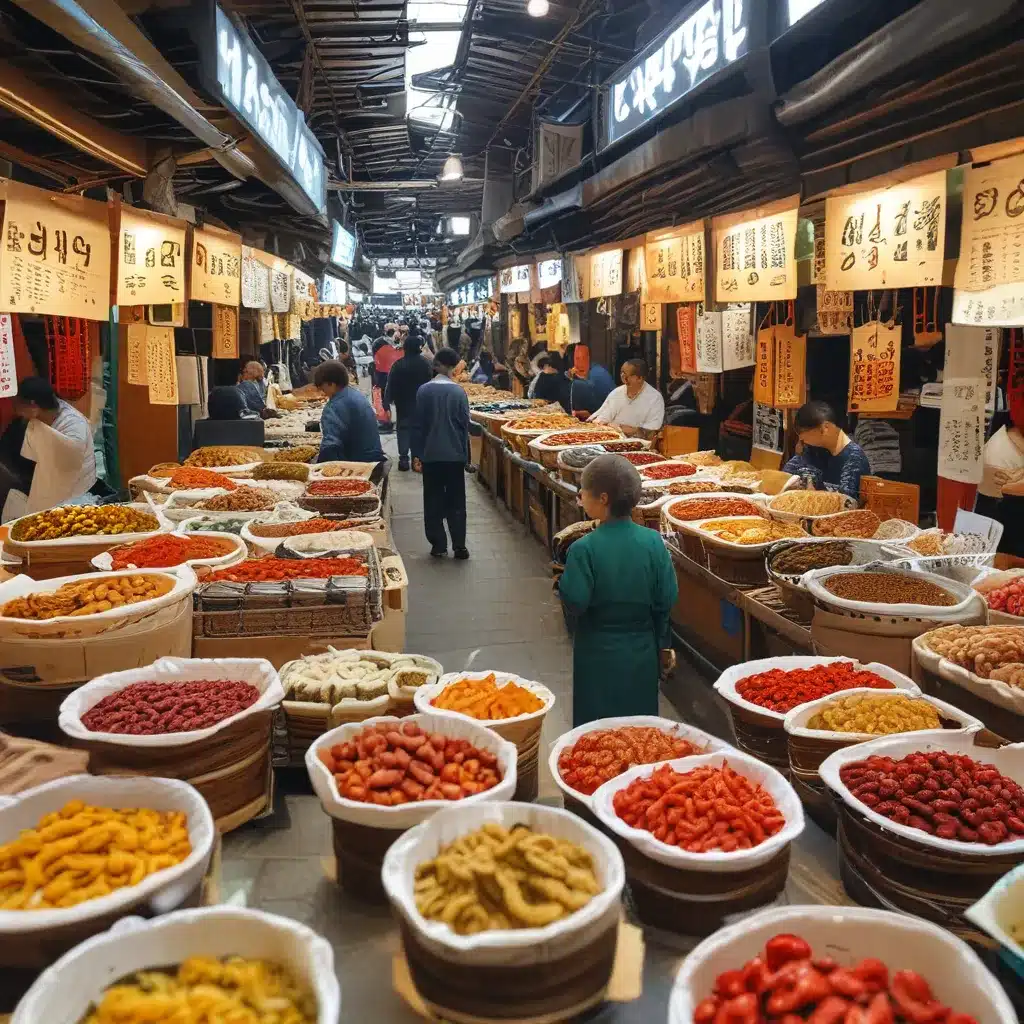
Stepping into the Heart of Seoul
If I could transplant one small part of another country and bring it right to my doorstep, it would undoubtedly be the Gwangjang Market in Seoul, South Korea. This vibrant, bustling marketplace has captured my heart and taste buds in a way that no other destination has. From the moment you step through its entrance, you are immersed in a sensory experience that transports you to the very essence of Korean culture.
The Gwangjang Market, established during the Japanese occupation as the first permanent market in Korea, is a true gem that has endured the test of time. With over 65,000 daily visitors and 5,000 shops and stalls, it’s a maze of culinary delights, vintage treasures, and the beating heart of Seoul. As I wandered through its winding aisles, the sights, sounds, and smells were like a siren’s call, luring me deeper into its captivating embrace.
Navigating the Culinary Labyrinth
The true magic of Gwangjang Market lies in its street food scene. As I ventured into the heart of the market, the booming calls of the vendors drew me in like a moth to a flame. The air was thick with the aroma of sizzling meats, the crackle of pancakes, and the tantalizing scents of Korean staples like bindaetteok (mung bean pancake), gimbap (Korean seaweed rice rolls), and tteokbokki (spicy rice cakes).
Navigating this culinary labyrinth was both exhilarating and overwhelming. With so many options, my senses were in overdrive, and I found myself darting from one stall to the next, trying to decide where to begin. The key, I soon learned, was to follow my nose and my gut – the vendors who were drawing the biggest crowds and the ones whose aromas were simply irresistible.
As I settled into a cozy spot on the crowded benches, I was struck by the sense of community that permeated the market. Locals and tourists alike were elbow-to-elbow, sharing in the joy of a shared culinary experience. The energy was palpable, and I couldn’t help but feel a sense of excitement and anticipation as I waited for my first bite.
Embracing the Unexpected
One of the standout experiences I had at the Gwangjang Market was my encounter with the sannakji (live octopus). Now, I’ll admit, the idea of eating a squirming, tentacled creature wasn’t exactly at the top of my must-try list. But when in Rome (or Seoul, as it were), I knew I had to embrace the unexpected and dive in headfirst.
As I approached the stall, the emo (the affectionate term for the female vendor) greeted me with a warm smile and a theatrical display of the long-armed octopus. She pulled it from the tank, showcasing its impressive size and lively movements, and I could feel the eyes of the other patrons on me, anticipating my reaction.
Despite my initial hesitation, I decided to take the plunge. The emo quickly dispatched the octopus, chopping it into smaller, bite-sized pieces and dressing it in a savory blend of oils and seaweed. As I took my first tentative bite, I was surprised to find that the texture was not as gummy as I had expected, and the flavors were actually quite mild and pleasant, enhanced by the accompanying seasonings.
Seeing the delight on the emo’s face as I savored the sannakji was a moment I’ll never forget. It was as if she was welcoming me into the fold, proud that I had embraced this unique part of Korean culinary culture. And as I sipped the soju that she insisted I try, I knew that I had truly immersed myself in the heart of Seoul.
Uncovering Hidden Gems
Beyond the bustling street food scene, the Gwangjang Market is a treasure trove of hidden gems waiting to be discovered. As I wandered through the maze of stalls, I stumbled upon a veritable fashion and textile paradise on the second floor, where vendors offered an impressive array of high-quality silks, satins, and traditional hanbok (Korean clothing).
I couldn’t help but marvel at the craftsmanship and attention to detail in these textiles, and I found myself drawn to the vintage collections that seemed to beckon to the younger generation. It was like stepping into a time capsule, with each piece telling a story of Korea’s rich cultural heritage.
As I perused the stalls, I couldn’t resist the temptation to strike up a conversation with the vendors. Their passion for their craft was palpable, and they eagerly shared the history and significance of the materials they were selling. I learned about the intricate process of silk production, the symbolism behind the patterns, and the importance of preserving these traditional art forms.
Embracing the Soul of Seoul
The Gwangjang Market is more than just a bustling marketplace – it’s a testament to the enduring spirit of Seoul and the resilience of the Korean people. In a city that is constantly evolving, this iconic destination has managed to maintain its authenticity, serving as a reminder of the country’s rich history and cultural traditions.
As I wandered through the market, I couldn’t help but feel a sense of connection to the people and the place. The energy, the camaraderie, and the sheer joy of sharing a meal with strangers – it was all a testament to the power of food to bring people together.
Whether you’re a first-time visitor to Seoul or a seasoned local, a trip to the Gwangjang Market is a must-do experience. It’s a chance to immerse yourself in the heart and soul of this vibrant city, to taste the flavors that have nourished generations of Koreans, and to connect with the rich cultural tapestry that makes Seoul such a captivating destination.
So, the next time you find yourself in the Hotel Stayin Seoul, make sure to carve out some time to explore the Gwangjang Market. Trust me, your taste buds (and your heart) will thank you.

